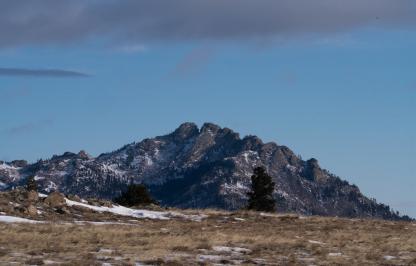A Wyoming elk hunt remains one of the most sought-after opportunities in the West, and the Wyoming Game and Fish Department saw another increase in non-resident applications for the 2018 season. Non-residents submitted 23,080 full-price elk applications for the 7,250 total licenses allocated by Wyoming state law. The number of applications is a 10 percent increase from 2016.
“The hunting opportunities in Wyoming are some of the most valued in the world. We’re excited to host hunters in the fall and thank non-residents for their support of Wyoming’s wildlife conservation because they provide the bulk of revenue from license sales,” Scott Talbott said, Wyoming Game and Fish director. “The increase in applications also shows how valuable a resource elk hunting is to Wyoming residents. They continue to get 84 percent of all full-price elk licenses.”
Each January, Wyoming opens a month long application period for non-residents. The application period is short and the draw is earlier than most other Western states to help non-residents plan their hunts. Non-resident hunters take a chance at 7,250 licenses in the draw. This number is based on commission regulation --but the allocation of general licenses within that varies annually. Each year, wildlife managers provide a preliminary quota of elk licenses for the state; non-residents receive 16 percent with the remaining 84 percent reserved for residents. The number of general licenses available for non-residents in the draw is the difference between the commission regulation and the 16% of limited quota licenses. This year, 4,493 general licenses were available, up slightly from 4,443 in 2017. For 2018, it took non-residents at least two preference points to draw a general license.
Elk was one of the first hunting applications since license fees were increased. In 2017, the Wyoming Legislature was making cuts to almost all of government and withdrew all general funding for the department, but approved a license fee increase to offset that reduction to maintain current services. Jennifer Doering, Game and Fish license section manager said this increase didn’t stifle applications.
“We saw almost a 1 percent increase this year in applications for full-priced elk; the bull or any elk license. These applications primarily came from hunters who had preference points and were invested in a Wyoming elk hunt,” Doering said.
Interest in reduced-price cow/calf licenses also grew with 4,486 non-resident applicants--over a 21 percent increase in the past year, and a staggering 43 percent increase since 2016. Cow/calf licenses do not require preference points and are allocated through a random draw.
But, more applications does not mean more revenue for Game and Fish. Because of the costs related to credit card processing for both applications and refunds, Game and Fish pays $1.8 million dollars a year from its general operating fund for all the draws. These costs are not covered by the application fee, which goes to help pay for wildlife damages, and is barely offset by interest collected; only $220,000 last fiscal year.
“This is an issue the Wyoming Game and Fish Commission is interested in addressing to be able to reduce administrative costs and to allocate more resources to support wildlife,” said Greg Phipps, the new Game and Fish chief of the fiscal division. “There are several options that could help reduce these costs that will be discussed over the coming months.”
There is one last chance for non-resident elk hunters to pick up a license. After the resident draw is complete, the remaining licenses will be offered through a random leftover draw that both residents and non-residents can enter. No preference points can be used and general licenses are not available. Residents and non-residents have the same odds for drawing a license; in 2017, 3,704 elk licenses were issued--52 percent to residents, 48 percent to non-residents. The leftover draw application period is June 25-29. Most of the licenses available in the leftover draw are from parts of the state where there is more private land and public access is more limited.
Interest in Wyoming elk hunting continues to increase
Sara DiRienzo (307-777-4540)

